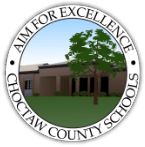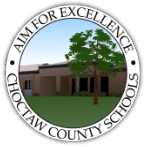Before Strategies
MEGA LISTENERS
- Pick one or two students before a passage is read or before a topic is discussed....they know that when you are finished, they will have to summarize the key points
QUICK WRITE
- Write a prediction about text
- Write a summary of the text
ABC BRAINSTORMING
- Individually list as many words as possible associated with the topic read in alphabetical order
- Assign each student a letter of the alphabet
- Each student writes a word that begins with his assigned letter about the topic in alphabetical order on a chart to make a class summary
ANTICIPATION GUIDE
- Mark each statement before reading the text as agree or disagree
- Mark each statement after reading the text to confirm or correct predictions
FIVE WORD PREDICTION
- Use only five words to make a prediction about the text
- Use those five words to write a summary paragraph
TABLE TALK
- Write a thought-provoking statement or question related to the subject of the upcoming lesson on the board.
- Students have two minutes to read the topic, reflect, and write a response.
- Students have three minutes to share their responses with a partner, reflect, and write a response to their partner’s statement.
- Pairs combine to form small groups of 4-6 students. Responses are shared within the group and one response is chosen to share with the whole class.
PREREADING PLAN
- Provide students with a cue word or idea to stimulate thinking about a topic.
- Have students brainstorm words or concepts related to the topic. Write all ideas.
- After all the words and ideas are listed, go back to each word and ask the contributor why he or she suggested the word. Clarify ideas or elaborate on concepts.
- Read the text.
- After reading, revisit the original list of words and revise if necessary.
WORD SPLASH
- Provide Select seven to ten meaningful words or phrases from the reading selection. Be sure to include not only similar words that will indicate the subject of the selection but also some of the words and phrases that seem contradictory to the others.
- Give each student a sheet and ask him/her to spend a little time thinking about what kind of story or article could include all of these words or phrases.
- Ask students to form small groups of three to five (or you can assign them to groups). In their groups, they should decide what the story will be about. They should also create a narrative or an explanation that will include all of the words or phrases.
- Ask each group to share their narrative or explanation. As they listen, students should look for common elements.
- Ask students to list the common elements they heard and list these elements on the board (or you could list them if students have trouble doing this).
- Individually, students now read a selection or an excerpt.
- In small groups or as a whole class, discuss the similarities and differences between the narratives they constructed prior to reading the selection, and the actual selection. It is very important to discuss the reasons for the differences. This discussion can highlight the number of possible approaches authors have available to them when deciding to write about a particular subject. Students' constructions may be perfectly logical without being exactly the same as the story or explanation the author constructed.
SEMANTIC MAPS
- Select the main idea or topic of the passage; write it on a chart, overhead, or chalkboard; and put a circle around it.
- Have students brainstorm subtopics related to the topic. Use lines to connect to the main topic.
- Have students brainstorm specific vocabulary or ideas related to each subtopic. Record these ideas beneath each subtopic.
- Read the text and revise the Semantic Map to reflect new knowledge.
SNOWBALL FIGHT
- Ask students to respond in writing to a quote, video clip, surprising fact or opinion.
- Students should ball their papers up and toss them to other students.
- Students will un-wad the papers they have been tossed and respond to the other student’s response.
- Repeat the process as many times as desired.
- The last student to respond must choose one statement to share that stands out to him as the most significant.
LIST-GROUP-LABEL
- Write a cue word on the board or overhead.
- Have students brainstorm words or concepts related to the topic. Write down all ideas.
- Lead a discussion about whether any words should be eliminated, and if so, why?
- Divide the class into groups of three or four. Have groups cluster the words and give each cluster a descriptive term.
- Have groups share their clusters and give reasons for their choices.
- Have students read the text. Afterward, have students revisit their clusters and modify them, if necessary.
- CORNERS
- Pose an open-ended question to students and offer them multiple answers.
- Give students time to think about each option; then, have them move to a corner of the room that
- has been designated as the meeting place for those who hold the same opinion.
- In the meeting places, have students discuss why they think the option they chose is the best one.
- If groups are large, you may divide them into smaller groups and have multiple groups discuss an
- opinion.
- After a set amount of time, have groups share their reasons for choosing each option.
- Types
- grizzly,
- polar, brown
- Food
- fish, berries,
- honey
- Habitat
- woods
- mountains
- Bears
FRAME OF REFERENCE
- Draw an oval (represents the picture in the frame) in the middle of a piece of chart paper or on the board.
- Place a keyword or topic inside the oval.
- Draw a larger oval around your “picture” to represent the “mat” area.
- Ask students to give you words or phrases that come to mind when they think of the pictured word and record responses in the “mat” area.
- In the remaining area (or draw a rectangle around the two ovals on the board to represent the frame), ask students to tell you how they came to know their responses and record the information in the “frame”.
- PReP
- Prompt students’ initial associations with a new concept by asking students to say what comes to mind when they hear the key term or new concept.
- As students respond, the teacher records their associations (without making any comments).
- Next the teacher asks each respondent to reflect on their association by asking students to explain their responses.
- Last, students are asked to add any new ideas that have come to mind after hearing others’ ideas.

